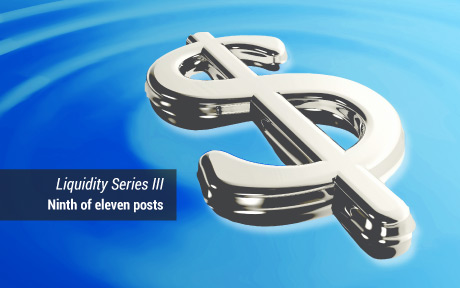Financial Crises and the Desirability of Macroprudential Policy

The global financial crisis has put financial stability risks—and the potential role of macroprudential policies in addressing them—at the forefront of policy debates. The challenge for macroeconomists is to develop new models that are consistent with the data while being able to capture the highly nonlinear nature of crisis episodes. In this post, we evaluate the impact of a macroprudential policy that has the government tilt incentives for banks to encourage them to build up their equity positions. The government has a role since individual banks do not internalize the systemic benefit of having more bank equity. Our model allows for an evaluation of the tradeoff between the size of such incentives and the probability of a future financial crisis
Are Asset Managers Vulnerable to Fire Sales?
Financial Stability Monitoring
In a recently released New York Fed staff report, we present a forward-looking monitoring program to identify and track time-varying sources of systemic risk.
Liquidity Policies and Systemic Risk
One of the most innovative and potentially far-reaching consequences of regulatory reform since the financial crisis has been the development of liquidity regulations for the banking system.
Intermediary Leverage Cycles and Financial Stability
The financial crisis of 2007-09 highlighted the central role that financial intermediaries play in the propagation and amplification of shocks.
Money Market Funds and Systemic Risk
On September 16, 2008, Reserve Primary Fund, a money market fund (MMF) with $65 billion in assets under management, announced that losses in its portfolio had caused the value of shares in the fund to drop from $1.00 to $0.97.
Just Released: Conference on Global Systemic Risk Explores Four Key Questions
The 2007-09 financial crisis spread to markets and institutions around the world, demonstrating why global systemic risk is a major concern in modern financial markets.
CoVaR: A Measure of Systemic Risk
Wonk alert: technical content — During the 2007-09 financial crisis, we saw that losses spread rapidly across institutions, threatening the entire financial system. Distress spread from structured investment vehicles to traditional deposit-taking banks and on to investment banks, and the failures of individual institutions had outsized impacts on the financial system. These spillovers were realizations of systemic risk—the risk that the distress of an individual institution, or a group of institutions, will induce financial instability on a broader scale, distorting the supply of credit to the real economy. In this post, we draw on our working paper “CoVaR”—issued in the New York Fed’s Staff Reports series—to do two things: first, propose a new measure of systemic risk and, second, outline a method that can help bring about the early detection of systemic risk buildup.











 RSS Feed
RSS Feed Follow Liberty Street Economics
Follow Liberty Street Economics